BeagleY-AI: The Latest SBC for AI Applications
on
The BeagleY-AI is BeagleBoard.org’s latest foray into the world of single-board computers (SBCs), this time targeting the rapidly growing field of AI and machine learning. Compact, open-source, and packed with specialized hardware, the BeagleY-AI is positioned as a versatile tool for developers and researchers who need a reliable platform for AI-driven tasks. But does it live up to the hype? Let’s take a closer look.
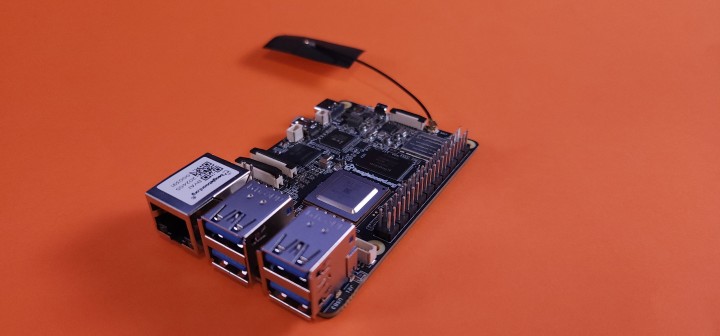
Hardware and Design
At the heart of the BeagleY-AI is the Texas Instruments AM67A processor, a quad-core Cortex-A53 CPU running at 1.4 GHz. While the CPU itself might seem modest compared to higher clock speeds seen in other SBCs, it’s designed with industrial and automotive applications in mind. Texas Instruments builds SoCs that are engineered for rock-solid reliability, with real-time control capabilities driven by the Cortex-R5 MCU cores and AI acceleration from dual C7x DSPs. These on-chip accelerators help the BeagleY-AI deliver powerful AI performance and handle precise, time-critical tasks, even in demanding environments.
For me, the value lies in the chip’s accompanying hardware. The AM67A is supplemented by dual C7x DSPs with matrix multiply accelerators (MMA), capable of delivering up to 4 TOPS (tera operations per second) of AI performance. This makes it suitable for deep learning applications, such as image recognition and real-time object detection.
It’s important to note that the 4 TOPS figure refers specifically to 8-bit operations, which are commonly used in AI inference tasks to optimize speed and efficiency. If higher precision is needed, such as 16-bit or 32-bit operations, the performance in TOPS would be lower.
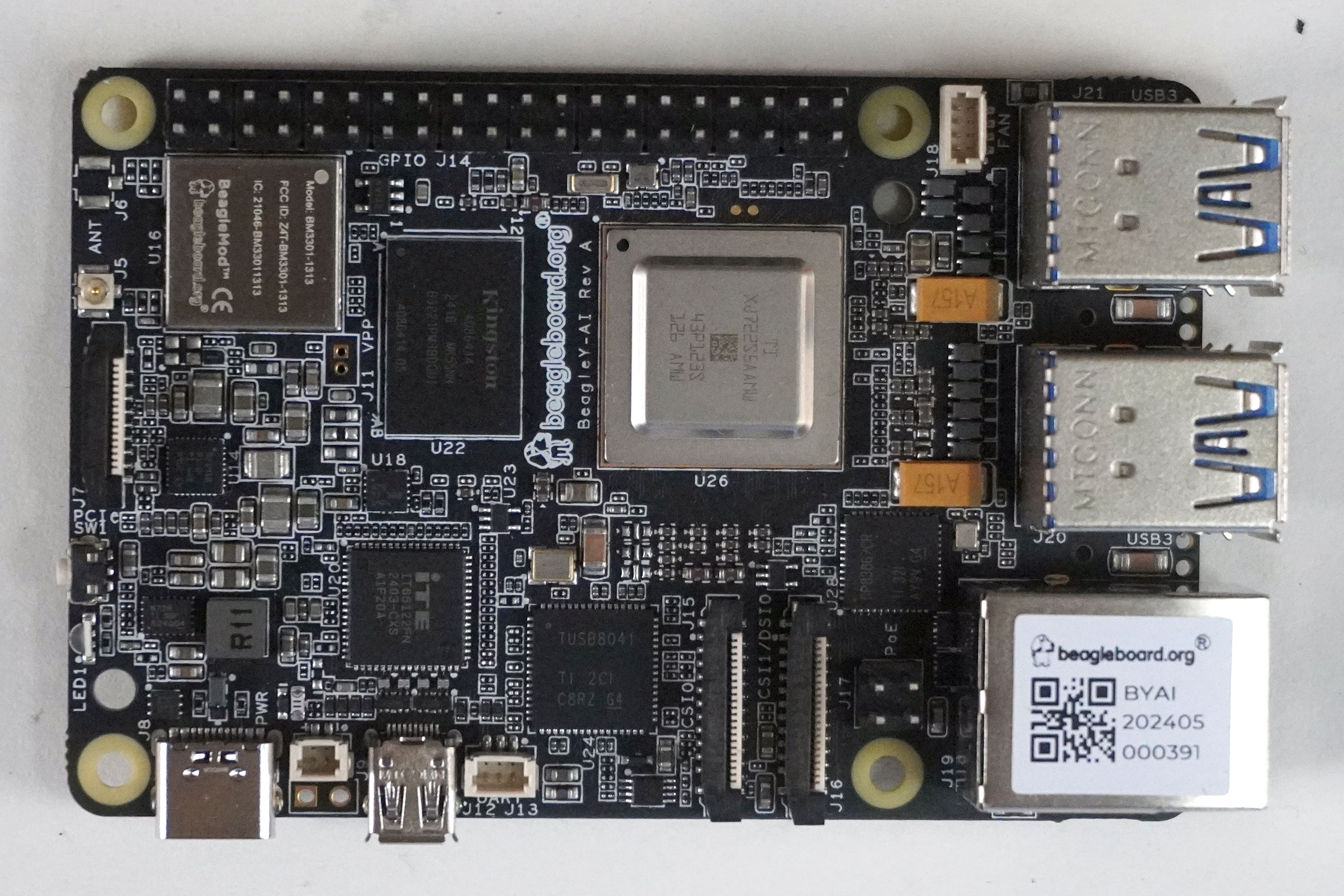
The board is well-equipped in terms of connectivity, featuring four USB 3.0 ports, a USB 2.0 Type-C port, and a Gigabit Ethernet port. Additionally, it supports Wi-Fi 6 (802.11ax) and Bluetooth 5.4, thanks to the BeagleBoard BM3301 module. For display outputs, you get a Micro HDMI port, an OLDI (LVDS) connector on the underside, and a MIPI-DSI interface, with the ability to drive up to three displays simultaneously. Storage is handled via a microSD card slot, which is standard fare for SBCs in this category and form factor.
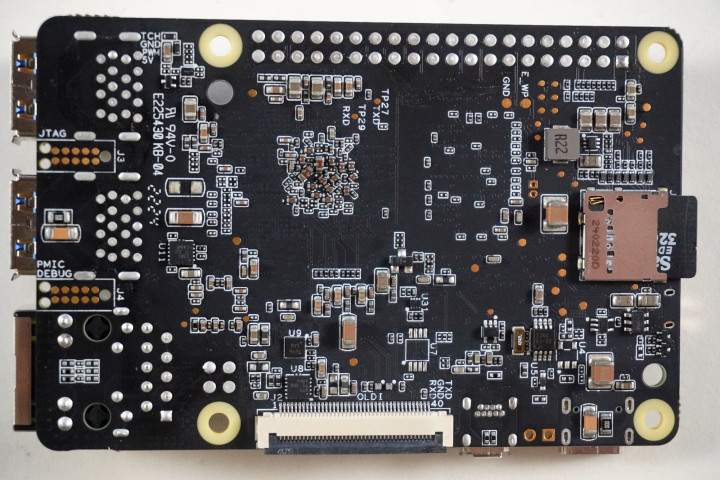
One of the standout features is the inclusion of a 16-pin PCIe Gen3 x1 FPC connector, which provides high-speed expansion options. The board is also fanless, which is a welcome feature for users concerned about noise and reliability in long-term deployments. This is complemented by a 40-pin GPIO header, allowing for extensive customization and peripheral integration.
You’re surely familiar with 40-pin GPIOs, which is no coincidence: The BeagleY-AI has a Raspberry Pi-compatible form factor, which enables users to tap into the vast accessory ecosystem built around Raspberry Pi boards.
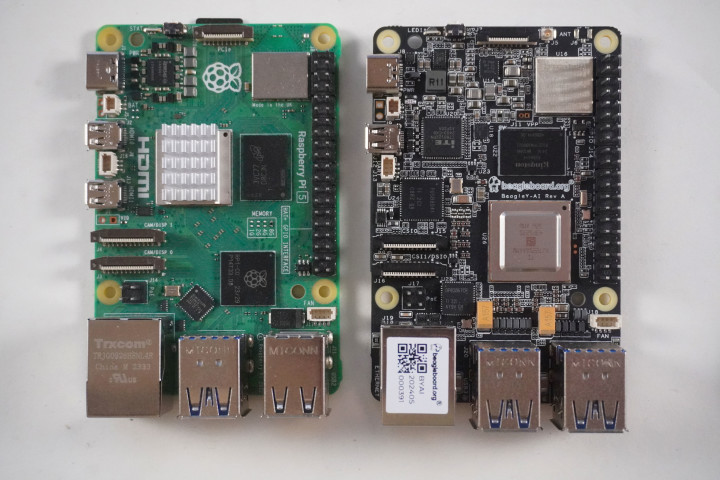
This includes compatibility with a wide range of cases, displays, and other peripherals, further enhancing the board’s versatility. Additionally, BeagleBoard.org provides complete access to design files, empowering users to customize and modify the board to meet their specific project needs.
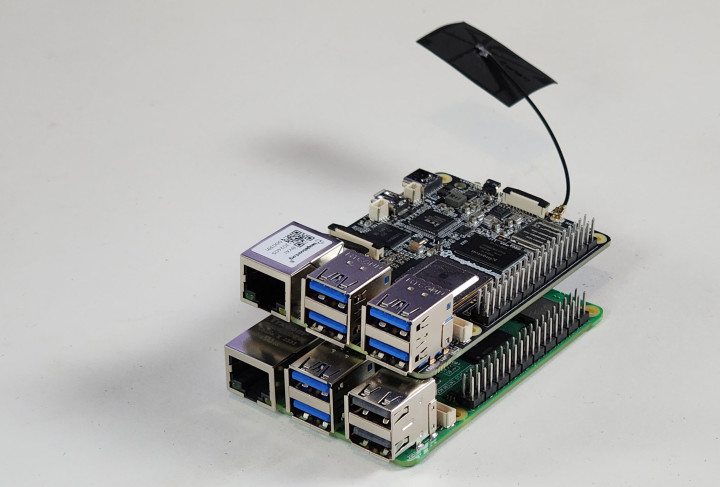
Despite its compact size, the BeagleY-AI is built with industrial applications in mind. The use of Texas Instruments components ensures robustness and long-term availability, making it a viable option for both prototype development and deployment in production environments. The open-source nature of the board also allows for modifications to suit specific needs, whether it’s tweaking the hardware design or optimizing software for particular use cases.
Software and Setup
The BeagleY-AI runs a Debian-based operating system, with an XFCE desktop environment providing a lightweight and responsive user interface. Getting started with the board is relatively straightforward, especially if you’ve worked with similar devices before. The setup process involves flashing the OS onto a microSD card, configuring the sysconf.txt file, and updating the software via the command line. BeagleBoard.org has provided detailed documentation, which is crucial for those who are not familiar with the nuances of SBCs.
For Windows users, the process of flashing the image can be a little cumbersome, requiring additional tools such as Balena Etcher or BeagleBoard’s own bb-imager.exe and the need to decompress the image file before use. I had a few minor niggles in this area on my Windows machine, but nothing insurmountable.
Once set up, the BeagleY-AI performs admirably, though there are some rough edges. For example, the GPU-accelerated libraries are present, but not all necessary components, such as the DSP compiler, are readily available. This might pose a hurdle for developers looking to fully exploit the board’s AI capabilities out of the box.
The board supports a wide range of development tools, which can be particularly useful for those looking to integrate AI functionality into their projects. For instance, TensorFlow Lite can be used to run machine learning models, while OpenCV provides a robust framework for image processing tasks. The community has already started contributing tutorials and guides, which can be an invaluable resource for newcomers to the platform.
One comforting advantage of the BeagleY-AI is Texas Instruments’ strong commitment to upstreaming its Linux kernel contributions. TI follows an “upstream-first” policy, making all necessary kernel and software changes available on the mainline Linux kernel as soon as the silicon is available. This ensures long-term support and compatibility with a broad range of software ecosystems.
Performance and Use Cases
The BeagleY-AI shines in AI-driven tasks, thanks to its specialized hardware. The combination of the dual C7x DSPs and MMAs allows for efficient execution of deep learning algorithms, making it a solid choice for applications in computer vision, robotics, and automation. During testing, the board handled TensorFlow Lite object detection tasks smoothly, albeit with some heat generation —temperatures reached around 74°C during intensive operations, which is warm but manageable without active cooling.
In practical applications, the BeagleY-AI’s capabilities extend beyond just AI. Its robust set of interfaces, including PCIe, USB 3.0, and Gigabit Ethernet, make it suitable for a variety of industrial tasks. Whether you’re building a smart camera system, automating a production line, or developing a robotic arm, the board’s flexibility ensures that it can be adapted to meet specific project requirements. The 40-pin GPIO header, compatible with a wide range of peripherals, further enhances its versatility, allowing for the integration of sensors, actuators, and other hardware.
However, it’s not all smooth sailing. The board’s relatively modest CPU means that it won’t replace a desktop for general computing tasks, and the 4GB of RAM, while adequate for many use cases, could be a bottleneck in more memory-intensive applications. Additionally, while the board supports PCIe expansion, it’s limited to a single lane of Gen3, which may restrict the performance of some peripherals.
One area where the BeagleY-AI stands out is in its potential for real-time applications. The inclusion of the Cortex-R5 cores allows for low-latency I/O operations, which can be crucial in environments where timing is critical. This makes it a strong candidate for use in fields such as medical devices, where precision and reliability are paramount.
Community and Support
One of the BeagleY-AI’s key strengths is its open-source nature. All hardware and mechanical design files are available, allowing advanced users to modify the board to suit their specific needs. . Texas Instruments also ensures its processors are readily accessible to developers and makers, providing open access to design files and software resources, which puts control back into the users’ hands. This openness extends to the software, with a robust Debian-based ecosystem that benefits from extensive community support. However, it’s worth noting that the AM67A processor itself is not open-source, a possible point of contention for some in the community.
The documentation provided by BeagleBoard.org is thorough, covering everything from initial setup to advanced use cases. That said, there’s room for improvement in terms of software support. As of mid-2024, some of the AI features and tools, such as the Edge AI framework, are not fully supported, which could limit the board’s appeal to cutting-edge developers. Forums and community resources are active, but the board’s relatively recent release means that some kinks are still being worked out.
The BeagleBoard.org community is one of the more active and collaborative ecosystems in the SBC world. Users regularly share projects, provide troubleshooting advice, and contribute to the development of new features. This level of community engagement is a significant advantage for new users, as it means that there’s a wealth of knowledge to tap into. Whether you’re a seasoned developer or a hobbyist, you’ll find that the community is welcoming and willing to help.
Future Potential
Looking ahead, the BeagleY-AI has significant potential for growth. As the software ecosystem matures, we can expect to see more comprehensive support for AI frameworks and tools. Firmware updates could unlock new features or improve existing ones, particularly in the realm of AI processing and peripheral integration. Additionally, third-party developers are likely to create add-ons and expansions that enhance the board’s capabilities, making it even more versatile.
The open-source nature of the BeagleY-AI means that it’s not just a static product — it’s a platform that can evolve. Users who are willing to engage with the community and contribute to the project will find that they can shape the future of the board, ensuring that it meets the needs of a wide range of applications. This adaptability is one of the key reasons why the BeagleY-AI is worth considering for any AI or embedded project.
Pros and Cons
Pros
- AI Performance: The dual C7x DSPs and MMAs deliver up to 4 TOPS, making it ideal for deep learning tasks.
- Connectivity: With USB 3.0, Gigabit Ethernet, Wi-Fi 6, and Bluetooth 5.4, the board is well-equipped for various applications.
- Expandability: The PCIe Gen3 x1 connector and 40-pin GPIO header offer significant customization options.
- Open-Source Hardware: Users can access and modify all hardware design files, fostering innovation and adaptation.
- Industrial-Grade Components: The use of Texas Instruments hardware ensures reliability and long-term support, making it suitable for both development and deployment.
Cons
- CPU Performance: The 1.4 GHz quad-core Cortex-A53 is underwhelming compared to newer SBCs.
- RAM Limitations: 4 GB of LPDDR4 RAM may not be sufficient for all applications.
- Software Gaps: Some AI features and tools are not fully supported, limiting the board’s out-of-the-box capabilities.
- Heat Management: The board runs warm under load, and while it’s fanless, some users might prefer active cooling.
Is It Right for You?
The BeagleY-AI is a compelling choice for developers and researchers looking for a versatile, AI-capable SBC. Its open-source design, coupled with the powerful AM67A processor, makes it suitable for a wide range of applications, particularly in AI and machine learning. However, it’s not without its limitations. The CPU performance is modest, the RAM may not be sufficient for more demanding tasks, and some AI features require further software support.
That said, the board’s strengths — such as its robust AI acceleration, comprehensive connectivity options, and expandability — make it a valuable tool for those willing to navigate its quirks. As the software ecosystem matures and the community continues to contribute, the BeagleY-AI’s potential will likely expand, making it an even more attractive option for AI-driven projects. Whether you’re exploring cutting-edge AI applications or seeking a reliable platform for industrial automation, the BeagleY-AI offers a solid foundation that rewards innovation and experimentation.
For complete documentation on the BeagleY-AI, visit beagleboard.org/boards/beagley-ai.


Discussion (0 comments)